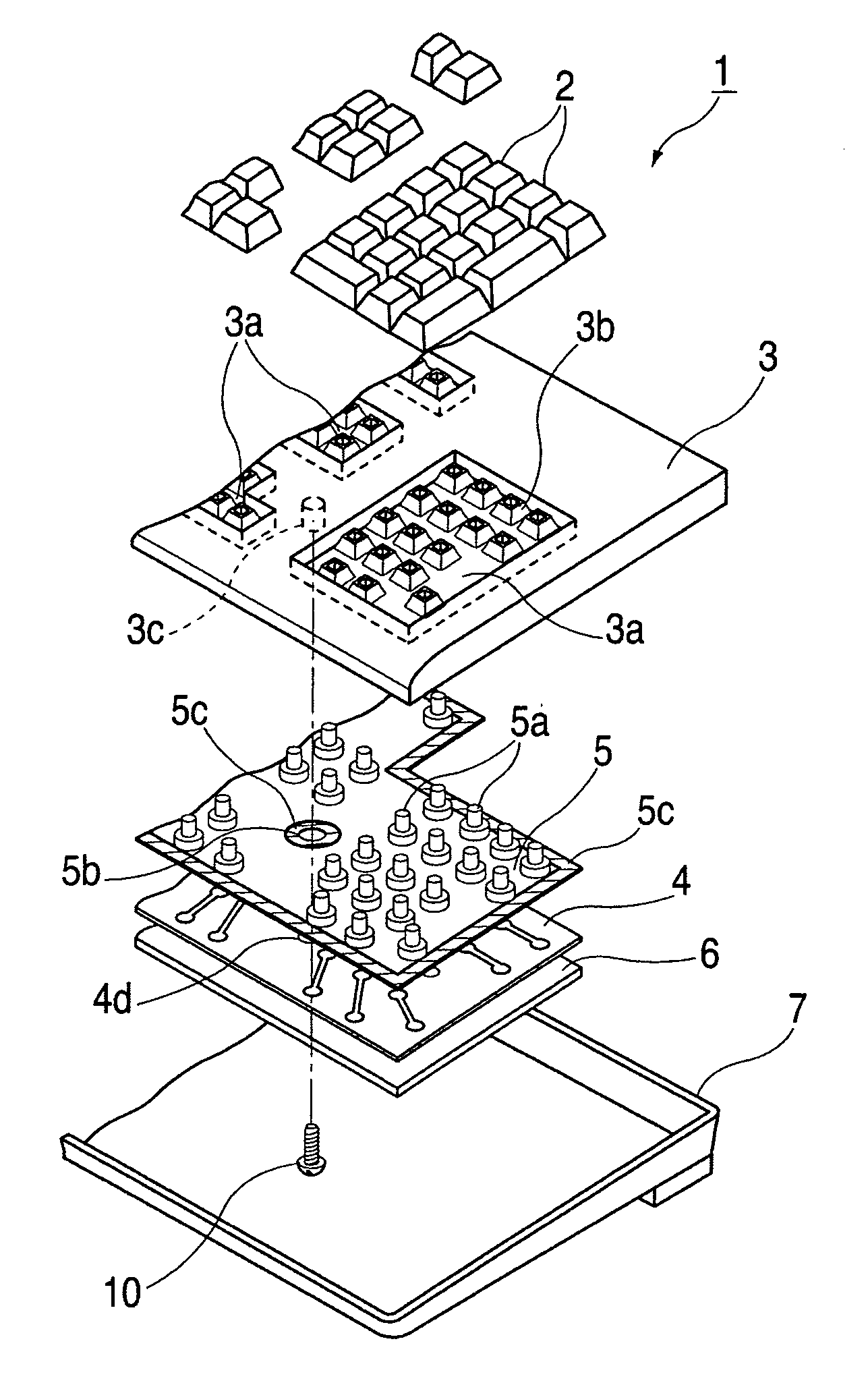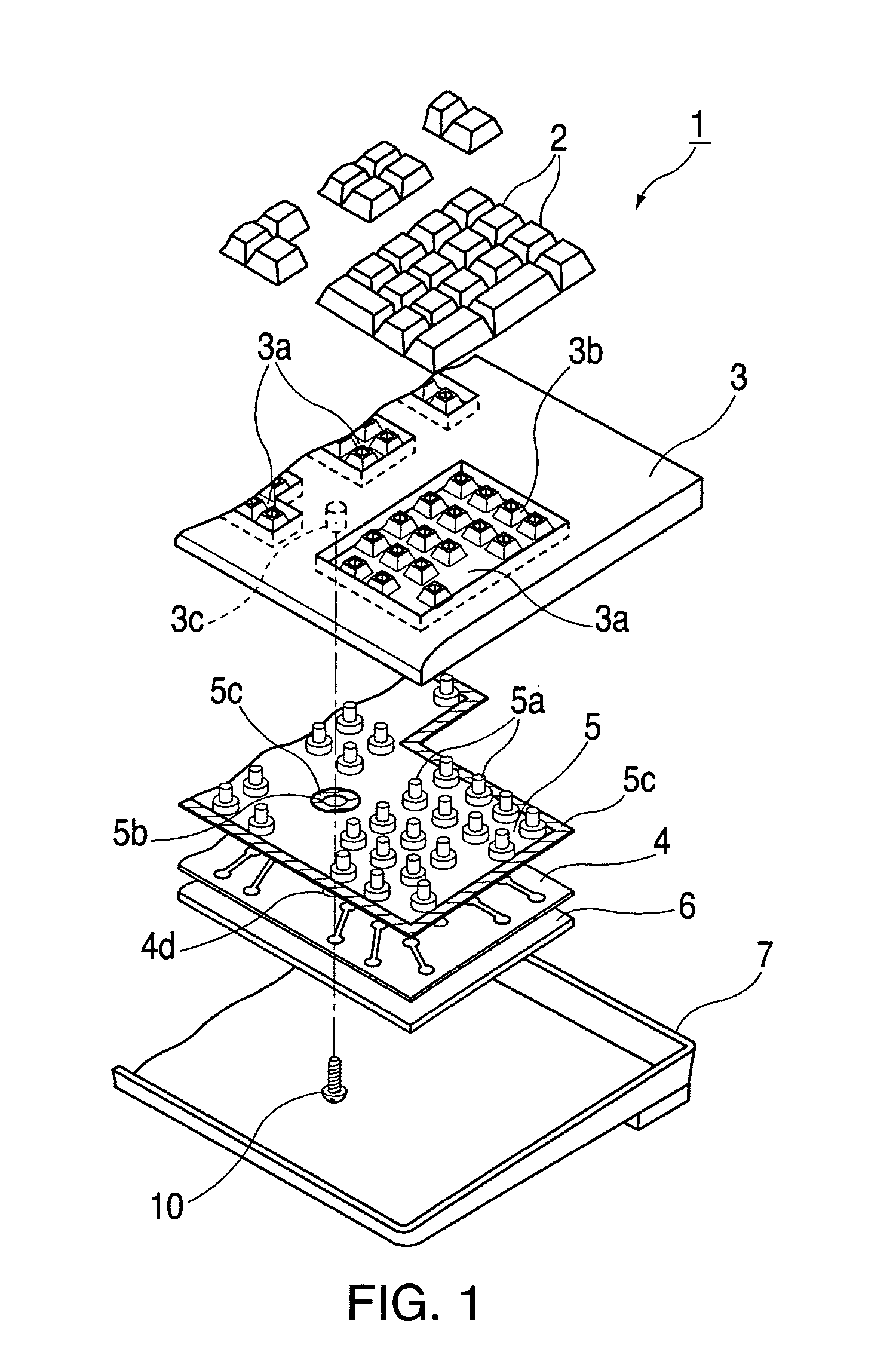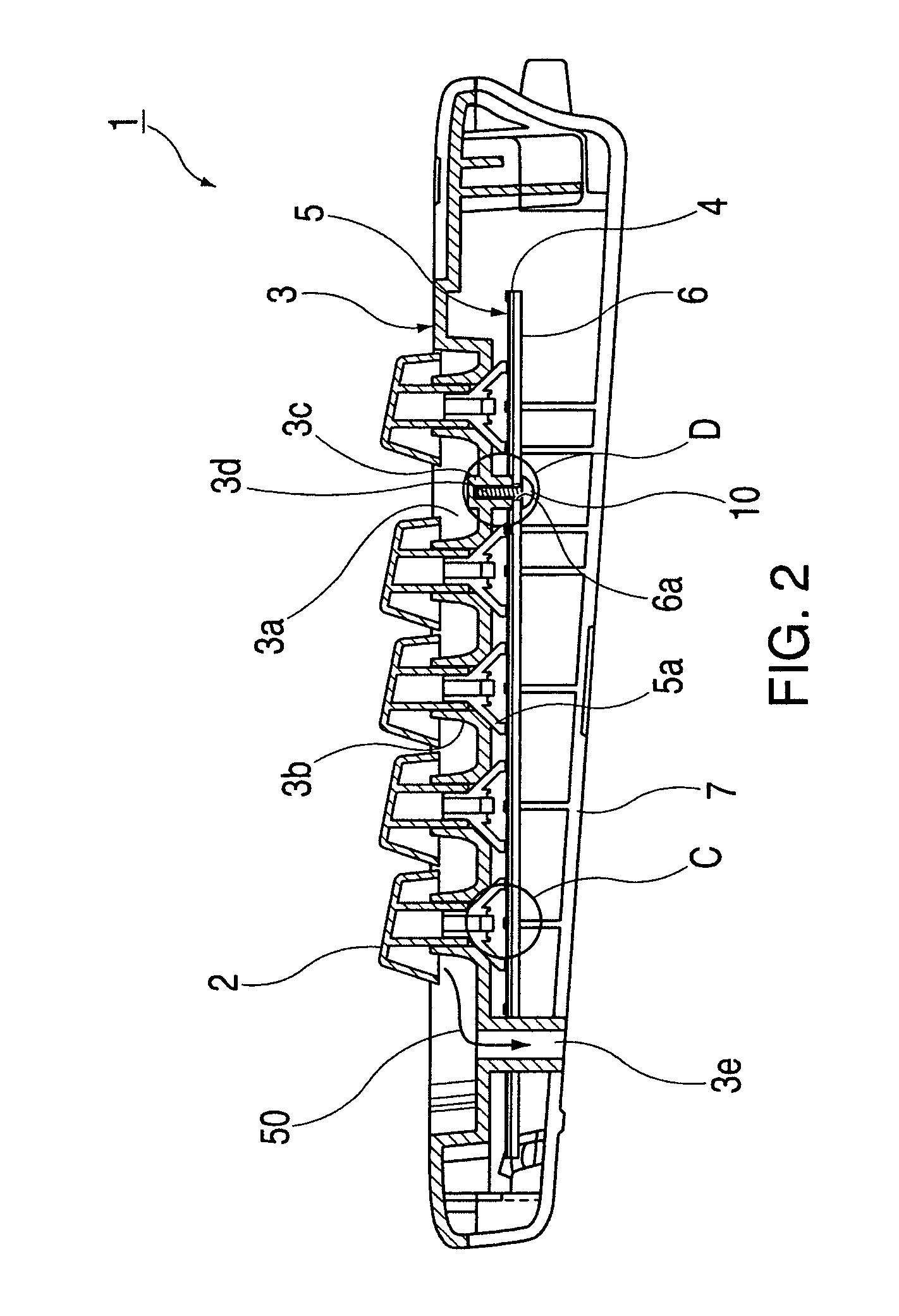Keyboard spill-proofing mechanism
- Summary
- Abstract
- Description
- Claims
- Application Information
AI Technical Summary
Benefits of technology
Problems solved by technology
Method used
Image
Examples
Embodiment Construction
[0022]Referring to FIGS. 1–7, we provide detail descriptions of various embodiments of the keyboard spill-proofing mechanism disclosed in the present invention.
[0023]FIG. 1 shows an exploded view of a spill-proofing keyboard. As shown in FIG. 1, a keyboard 1 includes a plurality of key caps 2 and top case 3. Top case 3 fits together with key caps 2 so as to allow key caps 2 to slide freely. Top case 3 is substantially rectangularly shaped and made of synthetic resin. Moreover, top case 3 has concave areas 3a in which each key cap 2 is positioned. Top case 3 also has multiple hollow bosses 3b that are integrally formed inside concave areas 3a so as to provide a specified space or gap in the left-right and up-down directions. Key caps 2 fit into hollow bosses 3b so as to allow key caps 2 to move freely in the vertical direction. Multiple connecting bosses 3c are formed in top case 3 and project downward therefrom. Connection bosses 3c serve to connect top case 3 to back plate 6 by pen...
PUM
 Login to View More
Login to View More Abstract
Description
Claims
Application Information
 Login to View More
Login to View More - R&D
- Intellectual Property
- Life Sciences
- Materials
- Tech Scout
- Unparalleled Data Quality
- Higher Quality Content
- 60% Fewer Hallucinations
Browse by: Latest US Patents, China's latest patents, Technical Efficacy Thesaurus, Application Domain, Technology Topic, Popular Technical Reports.
© 2025 PatSnap. All rights reserved.Legal|Privacy policy|Modern Slavery Act Transparency Statement|Sitemap|About US| Contact US: help@patsnap.com



